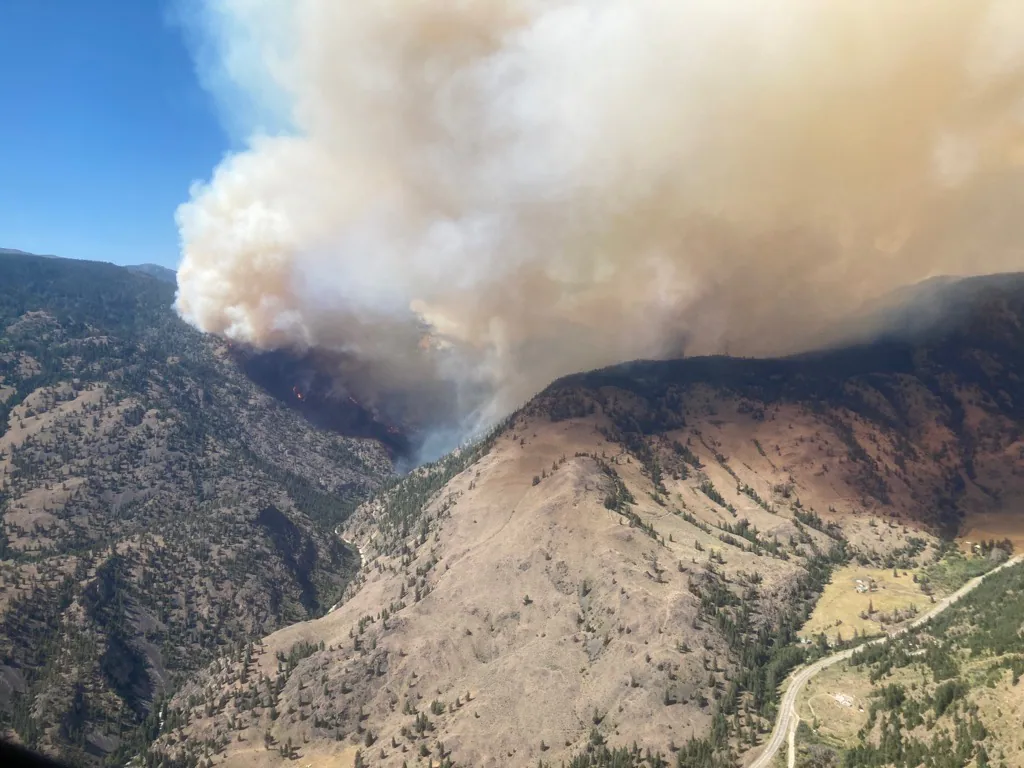– by Fred Larsen for Sustainable Orillia
Last December, on my return from a trip to Victoria, I wrote of the “atmospheric river” that poured heavy rains into the mountains of southern B.C. during November of 2021, melting snow and swelling rivers so quickly that roads and bridges were washed out. A large part of the Fraser Valley around Abbotsford was flooded, with devastating losses of livestock and farmland. The town of Merritt saw their Coldwater River shift its path as a result of the flooding – right down the town’s main street! Damage from flooding also hit the towns of Hope and Princeton, B.C. Supply lines—via highways and rail lines—to the lower mainland and Vancouver Island were cut, leading to temporary shortages of gasoline and other goods.
All of this damage came from just ONE weather event in 2021. Readers will recall that earlier in 2021, during June, Vancouver and Victoria experienced a “heat dome” for six days which is estimated to have killed at least six hundred people. In addition, during that same period and after, the province experienced its worst season of forest fires, one of which completely destroyed the town of Lytton. Beyond the losses in both human and animal lives, what is the cost of the damage caused by these events? The total cost of losses and repairs is estimated to reach 13 billion dollars.
That was last year – recently, we headed back to B.C., this time for a family reunion of my wife’s family—a reunion that had been postponed for two years by the COVID 19 pandemic. And once again, we were struck by extreme weather, as well as the ongoing efforts to repair the damage that had been done months earlier.
Kelowna was stifling at 37 and 38 degrees. Our hosts lived in a home that did not have air-conditioning; at night, as a result, sleeping was a real challenge even with windows wide open and fans—sometimes 2—blowing throughout the night in the rooms. The temperature of the pool, totally as a result of the daily heat, was a high as 39 degrees—nice for a bath, perhaps, but not exactly a “refreshing” dip.
A day after we arrived in the area, a storm roared through. The lightning ignited a fire just southwest of Penticton, B.C., forcing several families to evacuate and a highway to be closed. Eight days later, the fire was still spreading because of the heat and wind.
The family reunion was held in the Sunshine Valley, just east of Hope on the Hope-Princeton highway. As we drove the highway, we saw evidence of the November rains. At least two bridges were being replaced and in several spots of the highway, new pavement revealed the extent that water had undermined the sides of the road next to steep inclines from the mountains beside us.
On the return trip to Kelowna via the Coquihalla Highway, we saw more evidence of serious washouts of the road and bridges. B.C. government sources reveal that the 2021 rain damaged more than 20 sites along 130 kilometres of the Coquihalla Highway between Hope and Merritt. This included seven bridges where spans completely collapsed or were heavily damaged
While we drove the highway just a week ago, construction equipment could be seen both repairing the highway and, in some places, working to change the river bed that paralleled the highway so that the extensive flooding wouldn’t be repeated next time. (And there will be a next time.) Replacement bridges were being reinforced by huge blocks of stone and were being raised as much as five or six feet above the previous levels of the road.
It’s only a few years ago that climate sceptics were arguing that we couldn’t afford to address climate change. “It would damage the economy too drastically,” they said, making an either/or out of the environment and our economy.
In 2022 the evidence clearly shows that, without action to mitigate the changes brought about by the emissions of CO2 and other greenhouse gases caused by human activity on this planet, the costs of doing nothing to change our way of living will be measured in the billions as we seek to repair damage and recover from losses caused by extreme weather events and the changing climate.
Is British Columbia our “canary in the climate coal-mine”? I hope not, but the lesson is clear—especially as scientists predict that these extreme weather events—storms, tornadoes, droughts and fires—will continue to increase both in number and in severity; not just in BC, but right across the country, including here in the Orillia Region. The time to act to change the way we live . . . is now.
The costs of change will be high. The costs of not changing will be much higher.

